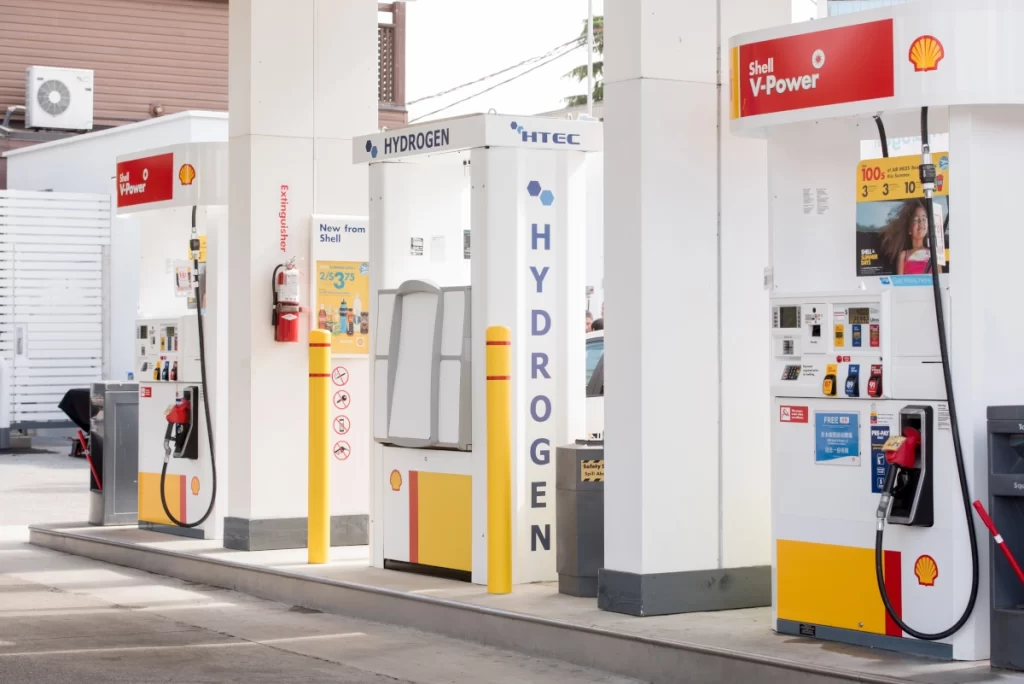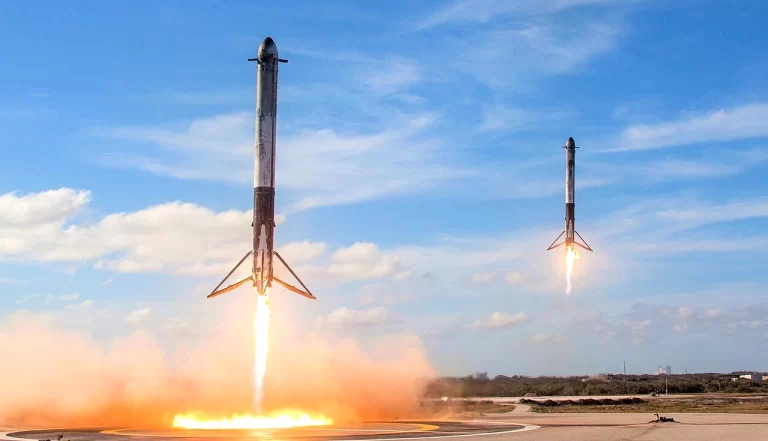In recent years, the global energy landscape has undergone a significant transformation toward sustainability, with an increasing focus on low-carbon solutions. To stay ahead of this curve, Shell EV, a subsidiary of Shell plc, has embarked on a strategic diversification into electric vehicle (EV) charging and renewable energy. This case study explores Shell EV’s diversification efforts, its strategic approach, challenges faced, the competitive landscape, and the potential impact on the company’s long-term growth. This shift not only aligns with global sustainability trends but also positions Shell for future competitiveness in a rapidly evolving energy market.
Drivers Behind Shell’s Diversification into EV Charging and Renewable Energy
The key drivers behind Shell’s transition are regulatory, market, and environmental pressures. Governments worldwide are implementing stricter carbon emission reduction policies, accelerating the demand for cleaner energy alternatives. At the same time, rising consumer awareness of environmental issues has increased demand for sustainable practices. Shell, historically an oil and gas giant, recognized the need to evolve its portfolio by embracing electric mobility and renewable energy sources.
In 2020, Shell set the ambitious goal to become a net-zero emissions energy business by 2050. To achieve this, the company has prioritized reducing its dependence on fossil fuels and expanding its reach into low-carbon technologies, including EV charging infrastructure and renewable energy production.
Shell 2030 Planned Investment
Shell has significantly ramped up its investments in renewable energy and EV infrastructure as part of its strategy to transition into a sustainable energy leader. By allocating billions towards green hydrogen, solar, and wind projects, Shell is diversifying its energy portfolio while expanding its global EV charging network. These investments not only contribute to reducing carbon emissions but also ensure Shell remains competitive in a rapidly evolving energy market.
Strategic Initiatives by Shell EV
Expansion into Electric Vehicle Charging
Shell’s vision to lead in the growing EV market is reflected in its investments and acquisitions aimed at building a comprehensive charging infrastructure. The company has committed to installing over 500,000 charging points globally by 2025, up from its current base of about 80,000 EV charging points.
Key Initiatives in EV Charging:
- Acquisition of Ubitricity (2021): Shell acquired Ubitricity, a UK-based on-street charging provider. This acquisition gives Shell a competitive edge by focusing on urban EV charging solutions, making it easier for city dwellers who do not have access to home-based charging.
- Partnerships with Auto Manufacturers: Shell has established strategic partnerships with BMW, Nissan, and Mercedes-Benz to expand its network. These partnerships help Shell deliver integrated and seamless charging solutions, further solidifying its presence in the global EV charging market.
- Shell Recharge: The company’s own charging network, Shell Recharge, has seen rapid growth. Shell has expanded its network to highways, shopping centers, and urban areas, offering both fast and ultra-fast chargers. These charging stations are often integrated into existing Shell petrol stations, providing convenience for customers transitioning to electric mobility.
Investments in Renewable Energy
Shell’s commitment to renewable energy is equally ambitious. The company has pledged to generate 25% of its total energy from renewable sources by 2030, positioning itself as a leader in the clean energy transition. By investing in solar, wind, and hydrogen technologies, Shell is diversifying its energy portfolio.
Key Renewable Energy Projects:
- Offshore Wind Investments: Shell has heavily invested in offshore wind, with projects like the Hollandse Kust (noord) wind farm in the Netherlands. This wind farm, once completed, will have a capacity of 759 MW, providing renewable electricity to approximately 1 million homes.
- Solar Energy Expansion: Shell has expanded its solar energy capabilities through its subsidiary Shell Renewables and Energy Solutions. In the US, the company’s investment in Silicon Ranch, a leading solar energy firm, strengthens its position in providing renewable energy to both residential and commercial sectors.
- Hydrogen as a Clean Fuel: Shell is also making strides in green hydrogen development, which is seen as a future fuel for industries like aviation and heavy transport. Shell has been building hydrogen refueling stations across Europe and is exploring large-scale hydrogen production facilities in several regions.
Shell’s Renewable Energy Portfolio
Shell’s investment in renewable energy is one of the most aggressive among traditional energy companies. The company is diversifying into offshore wind, solar energy, and hydrogen, along with developing grid-scale battery storage systems to ensure stability in energy supply. Shell’s renewable portfolio not only helps meet sustainability targets but also positions the company as a leader in the transition to clean energy.
Integration of EV Charging with Renewable Energy
A key differentiator in Shell’s strategy is the integration of renewable energy into its EV charging infrastructure. Shell aims to power its entire EV charging network with 100% renewable electricity. This aligns with the company’s mission to provide a sustainable solution for electric vehicle users, ensuring that charging an EV remains a low-carbon activity.
Grid Services and Energy Storage Solutions
To support the scaling of renewable energy and EV charging, Shell is exploring advanced technologies such as vehicle-to-grid (V2G) systems and energy storage solutions. V2G technology allows electric vehicles to act as temporary energy storage units, feeding electricity back into the grid when demand spikes. This not only stabilizes the electricity grid but also creates additional revenue streams for Shell and cost savings for EV owners.
Additionally, Shell is investing in battery energy storage systems to address the intermittency of renewable energy sources like wind and solar, ensuring that excess energy is stored and available when needed, further contributing to grid stability.
Competitive Landscape
As Shell diversifies into EV charging and renewable energy, it faces intense competition from various players across both sectors.
Competitors in Electric Vehicle Charging
The EV charging sector is rapidly evolving, with established companies and new entrants racing to build expansive charging networks. Shell EV must compete with several global players:
- Tesla: Tesla’s Supercharger network is one of the most extensive fast-charging networks globally. Tesla’s dominance in the EV market gives it a distinct advantage, as its Supercharger stations are seamlessly integrated with its vehicles, offering a highly efficient charging experience. However, Tesla is now beginning to open its charging network to non-Tesla vehicles, increasing competition for Shell.
- BP Pulse: Another major competitor is BP Pulse, which has made significant investments in building an extensive network of EV chargers in Europe and the UK. BP Pulse also focuses on fast-charging solutions and is expanding into other regions, giving Shell tough competition, especially in Europe.
- Ionity: Backed by automakers like BMW, Ford, Volkswagen, and Mercedes-Benz, Ionity is rapidly scaling its ultra-fast charging network across Europe. Ionity’s stations are equipped with 350 kW chargers, positioning it as one of the fastest charging networks, a key selling point for EV drivers who prioritize short charging times.
- ChargePoint: Operating one of the largest EV charging networks in the US, ChargePoint is expanding rapidly in North America and Europe. ChargePoint’s focus on both public and private charging stations, including residential and workplace solutions, gives it a wide customer base and a competitive edge.
Competitors in Renewable Energy
Shell’s investments in renewable energy also position it against established players in the clean energy space:
- Ørsted: One of the world’s largest developers of offshore wind energy, Ørsted has been a pioneer in renewable energy, particularly wind. Ørsted’s vast experience and early-mover advantage in offshore wind projects make it a formidable competitor for Shell, especially in Europe.
- NextEra Energy: In the US, NextEra Energy is a leader in wind and solar energy. Its scale and ability to deliver large renewable energy projects put pressure on Shell to differentiate itself through innovation and integrated solutions with EV charging.
- Enel Green Power: An international renewable energy provider, Enel focuses on a diversified portfolio of wind, solar, hydroelectric, and geothermal power. Enel’s aggressive expansion in both Europe and the Americas makes it a key competitor in the renewable energy market.
- TotalEnergies: As a fellow oil and gas company transitioning into renewables, TotalEnergies competes directly with Shell in both the EV charging and renewable energy sectors. Total has committed to expanding its renewable energy portfolio, particularly in solar and wind, and aims to become a leading player in electric mobility by scaling its EV charging infrastructure.
Challenges in Diversification
Infrastructure and Regulatory Barriers
Expanding EV charging infrastructure, especially in urban areas, comes with challenges such as limited space, high costs, and regulatory approval processes. Installing charging points at scale requires extensive planning and coordination with local governments and utility companies, which can slow down the expansion process.
Additionally, Shell’s renewable energy projects often face long regulatory approval timelines, particularly in regions where land use and environmental impact assessments are stringent.
Transitioning Brand Perception
While Shell is making tangible progress in renewable energy and EV charging, transitioning the company’s brand image from a traditional oil and gas giant to a clean energy leader is a long-term endeavor. Shell must demonstrate consistent results to convince both consumers and environmental advocates that it is serious about its sustainability goals.
Shell EV’s Impact on the Market
Contribution to Carbon Reduction
By integrating EV charging infrastructure with renewable energy sources, Shell is directly contributing to carbon emission reductions. The company estimates that its investments in electrification and renewable energy could result in the avoidance of up to 500 million tonnes of CO2 annually by 2050.
Accelerating EV Adoption
Shell’s expansion into EV charging supports broader efforts to increase electric vehicle adoption. By providing convenient and fast charging solutions across urban and rural locations, Shell is reducing the barriers for consumers considering the switch to electric vehicles.
Long-term Growth Potential
Diversifying into renewable energy and EV charging offers Shell significant long-term growth potential. The global EV charging station market is projected to reach $60 billion by 2030, while the renewable energy market is expected to grow at a compound annual growth rate (CAGR) of 8.5% over the same period. Shell’s investments in these sectors not only future-proof the company’s business model but also open up new revenue streams as the global energy landscape shifts.
Conclusion
Shell’s strategic diversification into electric vehicle charging and renewable energy reflects the company’s commitment to sustainability and long-term growth. By investing in cutting-edge technologies and expanding its renewable energy portfolio, Shell is positioning itself as a leader in the energy transition. Although the company faces significant competition and regulatory challenges, its holistic approach to integrating EV infrastructure with renewable energy could provide a substantial competitive advantage in the future. Shell EV’s journey demonstrates the potential for traditional energy companies to play a pivotal role in driving the shift towards a cleaner and more sustainable energy system.




